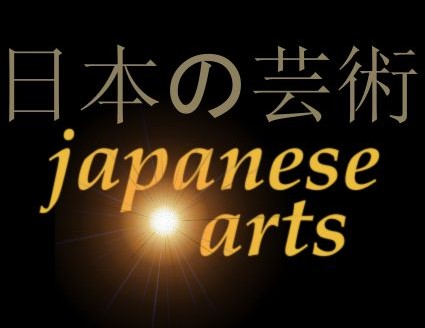| architecture |
| calligraphy |
| ceramics |
| clothing |
| comics |
| gardens |
| lacquerwork |
| literature |
| movies |
| music |
| painting |
| poetry |
| sculpture |
| tea ceremony |
| television |
| theatre |
| weaponry |
| thematic routes |
| timeline |
| the site |
context: thematic routes
Timeline
This is some kind of attempt to summarise Japanese history, in case someone wants to explore a particular period, or get a chronological view of Japan's artistic changes. I am not an historian, and this is not designed as an historical site, so I recommend going elsewhere if that is your interest (Wikipedia, for instance).
The links on the right lead to points all over the site, so they will each open in a new window, so that this page can be retained as master context. I will add to this page (particularly the links) as I expand the content of the site.
| Period | Start | End | Notes | Links |
|---|---|---|---|---|
| Palaeolithic | 10,000 BC | world's earliest polished stone tools | ||
| Jomon | 10,000 BC | 300 BC | earliest pottery in the world wooden stilt-houses wore clothes made of bark (no weaving) Ainu - not recognisably Japanese - genetically close to Tibetan and Mongolian peoples |
ceramics sculpture |
| Yayoi | 900 BC | 250 AD | immigrants from Korea bring the pottery wheel, bronze and iron work agriculture begins, with wet rice cultivation a recogniseably Japanese population exists |
ceramics architecture |
| Kofun | 250 | 538 | tumuli - large burial mounds haniwa sculpture Korean potters introduce tunnel kiln paintings on stone tombs Chinese writing imported, via Korea Yamato clans start gaining power, start of central administration |
haniwa tomb mounds tomb painting Ise Jingu Korean potters |
| Asuka | 538 | 710 | Yamato clans gradually take over Prince Shotoku establishes Confucianist constitution writing catches on Buddhism introduced national government and code of laws |
writing Shotoku's calligraphy Shiba Tori Buddhist painting |
| Nara | 710 | 794 | the first real imperial court, in Nara major historical books first narrative scrolls |
Nara literature Man'yoshu e-ingakyo Shitennoji temple Horyuji temple sculpture ceramics |
| Heian | 794 | 1185 | Japan's idea of itself resides here in major ways courtly manners first novels - including The Tale Of Genji kana writing invented Buddhist sculpture, painting and scrolls paradise gardens ended in civil war |
Literature Poetry Buddhist painting court painting writing Todaiji temple Byodoin temple Buddhist sculpture gardens |
| Kamakura | 1185 | 1333 | first shogunate - start of samurai dominance daimyo ruling their areas Zen introduced in 1191 Zen painting Unkei school of sculpture great ancient pottery centres start Noh theatre begins Renga poetry ended with very brief restoration of imperial rule |
Zen painting Zen painters Zen calligraphy Unkei school ancient kilns literature Noh renga gardens |
| Muromachi | 1336 | 1573 | 1542: first Portugese ship arrives, followed by Dutch, English, Spanish - brings firearms, trade, Christianity dry/Zen gardens tea ceremony starts to take on established form Kano and Tosa schools become major flower arranging becomes an art form decayed into long civil wars |
Zen painting Zen painters Zen calligraphy Kano school Tosa school Kinkakuji pavillion gardens tea ceremony ikebana |
| Azuchi-Momoyama | 1573 | 1600 | Oda Nobunaga almost unites country Toyotomi Hideyoshi does so succeeded by Tokugawa Ieyasu Rikyu defines the tea ceremony Hon'ami Koetsu's art colony/Rimpa school porcelain becomes a major ceramic item |
Rikyu Hasegawa Rimpa school Castles porcelain |
| Edo | 1600 | 1868 | original control methods (dual residence) urbanisation wealthier merchant classes sumptuary laws prints kabuki haiku inro professional zen artists fade away - all by monks Nanga art strolling gardens 1641: foreigners largely excluded 1853: US warships force reopening ends once again in civil war |
demographics prints kabuki haiku inro Zen painting Nanga painting Maruyama-Shijo school ceramics Katsura villa gardens |
| Modern | 1868 | Meiji, Taisho, Showa and Heisei periods strictly speaking starts with Meiji restoration - back to Emperor in charge many western reforms, including GB-style parliament comics introduced from US war with China 1894-95, Russia 1904-5 Occupation of Korea, 1910-45 Mingei folk-arts movement Axis Pact 1940, WWII |
comics calligraphy Mingei movement ceramics architecture gardens sculpture movies |
